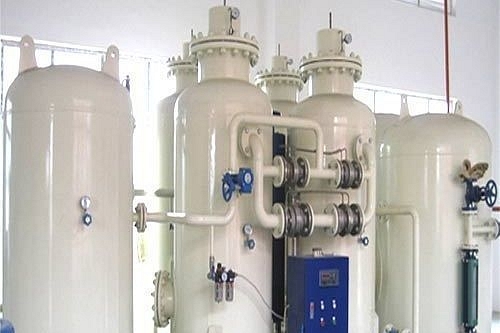News Brief
Second Covid-19 Wave: How PSA Oxygen Plants Could Help India
- PSA technology is used to separate gas species from a mixture of gases under pressure.

A PSA plant
The Indian government announced on 25 April that 551 medical oxygen generation plants, based on a technology known as Pressure Swing Adsorption (PSA), will be set up inside public health facilities around the country.
PSA technology is used to separate gas species from a mixture of gases under pressure.
As per the Press Information Bureau, PM Cares Fund had already allocated Rs.201.58 crores earlier this year for the installation of 162 dedicated PSA medical oxygen generation plants.
Considering the shortage of oxygen supply during the second wave of coronavirus in India, PSA plants could help the country to fight against the current crisis.
How do they work?
Separating various components from a mixture of gases is the main motive of a PSA oxygen plant.
These plants use a “clean technology” that absorbs nitrogen from the air and extracts oxygen for supply to specific facilities.
The Air Compressor compresses atmospheric air up to working pressure. After the dust particles are suspended, a coal tower absorbs traces of oil particles and other impurities.
An Air Tank then acts as an accumulator for the pressure swing adsorption cycle.
The PSA Generator which includes zeolites—used as commercial adsorbent—then separates oxygen and nitrogen from processed air.
These zeolites beds trap nitrogen molecules and allow the oxygen to stream through which later goes into an oxygen receiver that acts as an accumulator for further purification.
The generated oxygen can be supplied straight to the site of use through a dedicated pipeline or compressed to fill the cylinders.
But there are doubts that oxygen produced using PSA technology would be less pure than the liquid oxygen delivered from cryogenic technology, which is utilised by major plants producing liquefied industrial gas products.
According to the PIB, in this unprecedented situation, the aim behind setting up PSA plants at government hospitals in the district headquarters is to strengthen the public health system and ensure that each of these healthcare facilities has a captive oxygen generation facility.
“Such an in-house captive oxygen generation facility would address the day to day medical oxygen needs of these hospitals and the district. In addition, the liquid medical oxygen (LMO) would serve as a “top-up” to the captive oxygen generation,” added the press release.
It also noted that this system will go a long way in ensuring that government hospitals do not face sudden disruption of oxygen supplies.
This initiative will also ensure that the healthcare facilities have access to adequate uninterrupted oxygen supply to manage the Covid-19 patients and others who need such support.
According to this report, hospital owners who agreed to utilise PSA plants said that even though there is an initial set-up cost, which depends on the capacity of the plant, it is more than offset by the savings in monthly bills for oxygen.
As of now, out of 150 oxygen plants for which Central Medical Services Society (CMSS) allowed the tenders in 2020, only 33 have been established.
If there were 150 plants, these would have had the capacity to produce 80,500 litres of oxygen per minute.
While the requirement for oxygen has gone up dramatically during this second wave of the pandemic, a PSA plant that costs around Rs 50 lakh would be adequate for hospitals with a massive number of patients.
This week home ministry said that India’s problem is not about oxygen generation but transportation.
So in such a case if a hospital gets a captive plant it can generate all the oxygen required for the patients, reducing the dependency on cylinders.
Support Swarajya's 50 Ground Reports Project & Sponsor A Story
Every general election Swarajya does a 50 ground reports project.
Aimed only at serious readers and those who appreciate the nuances of political undercurrents, the project provides a sense of India's electoral landscape. As you know, these reports are produced after considerable investment of travel, time and effort on the ground.
This time too we've kicked off the project in style and have covered over 30 constituencies already. If you're someone who appreciates such work and have enjoyed our coverage please consider sponsoring a ground report for just Rs 2999 to Rs 19,999 - it goes a long way in helping us produce more quality reportage.
You can also back this project by becoming a subscriber for as little as Rs 999 - so do click on this links and choose a plan that suits you and back us.
Click below to contribute.
Latest